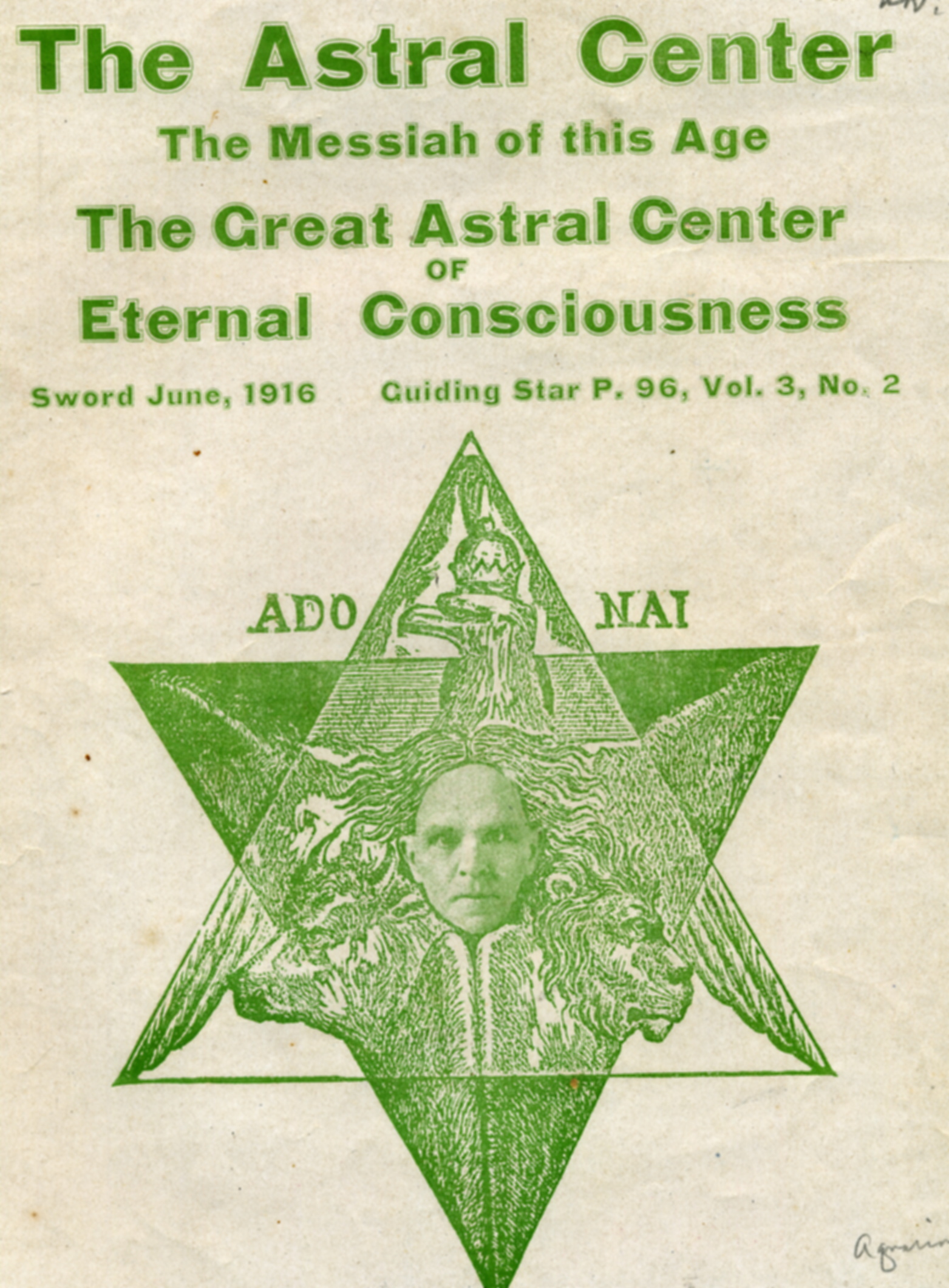From the Koreshan Archives:
The “Dark” Side…
The Koreshans were, for the most part, a group of dedicated and committed individuals who ,in my opinion, firmly believed in their teachings, whether it be Teed’s rising from the dead or the hollow earth. But there are always some persons or group of persons who use the honest beliefs of some to further their own agenda. After the death of Cyrus Teed and the fact that he did not rise from the dead, many Koreshans probably wondered what was next and where were they to go from here. There had to be any number of individuals who believed that they were the heirs to the throne so to speak
He apparently joined the Koreshans at some point, although he does not appear in Claude Rahn’s membership list (File AC-0125). In the book “Folks We Knew while in the K.U.” he is listed as one of the members. Marie McCready wrote that Edgar was one of the “odd balls”. She said he came from the “House of David” sect and she believed that he went back there. He wore a beard and had long hair and he attracted a small following including John Clinchey. [for more on the House of David sect, see the: web site]
In another article, Russell Anderson wrote the “The Shaker Community in Florida”, in the July 1959 issue of the “Florida Historical Quarterly”. ((1)) In the article he writes:
Mention should be made of the relationship of the Shakers of Osceola County with another religious group, the Koreshan Unity, at Estero in Lee County, Florida. This organization had been founded there in 1894 by Dr. Cyrus R. Teed, who brought the nucleus of the group from his home in Chicago and who convinced his disciples that he was immortal. Like the Shakers, the Koreshans practiced celibacy and communal ownership of property and held a belief somewhat similar to the Shaker concept of a male-female godship, but here the resemblance ceased. The Koreshans professed a belief in reincarnation and seem to have attracted a strange lot of followers, many of whom held peculiar
beliefs regarding the form of the world, life, etc. Because of a general agreement in some fields, each community was interested in the other and there was much visiting between them. At one time, in 1908, Ezra Stewart spoke of the Koreshan movement as a “racket” but the Shakers supplied information regarding their own beliefs and in 1909 Stewart wrote that “indications are that we may, gather some of them” (i.e., receive them as members).Interest among the Koreshans in Shakerism seemed to increase as dissension arose at Estero, yet only one of their adherents, Mary E. Daniels, joined the Shaker community. Generally the Shakers were sympathetic but cautious in regard to the Koreshans. For example, Edgar S. Peissert was furnished a copy of the Shaker novitiate covenant and given an invitation to visit. He indicated that he was in thorough accord with the covenant. Yet when he arrived he was found quite unacceptable. The point of view of the Shakers in such matters may be seen from the comment of Ezra J. Stewart who wrote in May, 1901, “As a result of an interview with the elders here … [it was thought best] that Edgar should depart [for Estero] next morning by train … as his views were found to be quite different from ours . . . He evidently hoped to set up a little kingdom here with himself as leader . [He] wears finger rings, and has much distaste for work, altho fairly strong and in good health”. ((2))
We don’t know exactly what happened to Peissert. Perhaps he went back to the “Sons of David” sect, as the McCready’s believed, but we imagine that there were some who believed in his claims, just like there were others who claimed Teed’s mantle. ((3))
- See AC-0167[↩]
- Ezra J. Stewart to Bro. Alonzo, May 30, 1904; October 6, 1906; September 29, October 6, 1907; April 1, October 18, November 22,1908; April 1, May 9,20,31, 1909; April 17, 1910, May 1, 1911; Dr. Charles A. Graves, Estero, Fla. to Ezra J. Stewart, September 29, 1907.[↩]
- Material on Peissert came to us via the Harry Manley collection. (AM-0180). Manley (and others) apparently kept a file on Peissert to dispute any claims he may have as to the succession of Cyrus Teed. Much of it is made up of so-called theological arguments and astrology. I won’t even attempt to get into any of those arguments since they seem to make little or no sense. The point, however, is that after Teed’s death in 1908, there were some who claimed that they were the ones who should succeed him. A core group of Koreshans held on to the reigns of power.[↩]
